10 Best Korean Translator Apps: Complete Guide

If you've ever tried translating Korean online, you know how tricky it can be to get results that actually make sense. The wrong translator can turn a polite phrase into something awkward or confusing. That’s why the best translation apps go beyond word-for-word accuracy to deliver natural, context-aware results.
In this blog, we've listed the best Korean translator apps that get it right. Each app here solves a different translation challenge. Whether you’re learning Korean, traveling in Seoul, or translating for work, these tools make understanding and communicating in Korean feel effortless.
Let's get started.
Top 10 Korean Translator Apps: Real-Time Voice, Text & Image Translation
From AI-powered live translation apps to specialized tools for reading menus and signs, today's tools offer far more than simple word-for-word conversion. Below we've compiled the 10 best Korean translator apps, each excelling in different areas.
| App | Standout Feature | Languages Supported | Pricing |
| Papago | Korean-specific accuracy and cultural context | 14 | Free |
| Maestra | Real-time translation with voice and captions | 125+ | Free 1-min trial; real-time plans from $79/month |
| Google Translate | Widest language coverage & versatility | 130+ | Free |
| Microsoft Translator | Business integration & group conversations | 100+ | Free (Enterprise pricing available) |
| Flitto | Hybrid AI + human translation | 25 | Free; paid credits for human translation |
| iTranslate | Polished interface with learning features | 100+ | Free; PRO from $7.99/month |
| Waygo | Offline visual translation of text in images | 3 (from Korean, Chinese, Japanese to English) | Free (10/day); $6.99 one-time for unlimited per language |
| KoTranslate | Simple Korean-English translation | 2 (two-way Korean-English only) | Free; premium in-app purchases |
| VoiceTra | Voice translation with verification | 30+ | Free |
| DeepL | Professional, human-like written translations | 30+ | Free plan available; paid plans start at $8.74/month |
1. Papago
Best for: Anyone specifically translating to or from Korean with maximum accuracy.
Developed by Naver, South Korea's leading search engine, Papago is widely considered as one of the best Korean translator apps. It excels at understanding Korean grammar structures, honorifics, and cultural context better than general-purpose translators. The app offers text, voice, image, and conversation translation modes, with particularly impressive camera translation for reading Korean signs and menus.
Pros
- Excellent image translation for Korean text (signs, menus, documents)
- Understands Korean honorifics and formal/informal speech levels
- Offers offline translation with downloadable language packs
Cons
- Supports around 14 languages (much fewer than Google Translate)
- Optimized mainly for Korean and other Asian language pairs
Pricing: Free with no hidden costs.
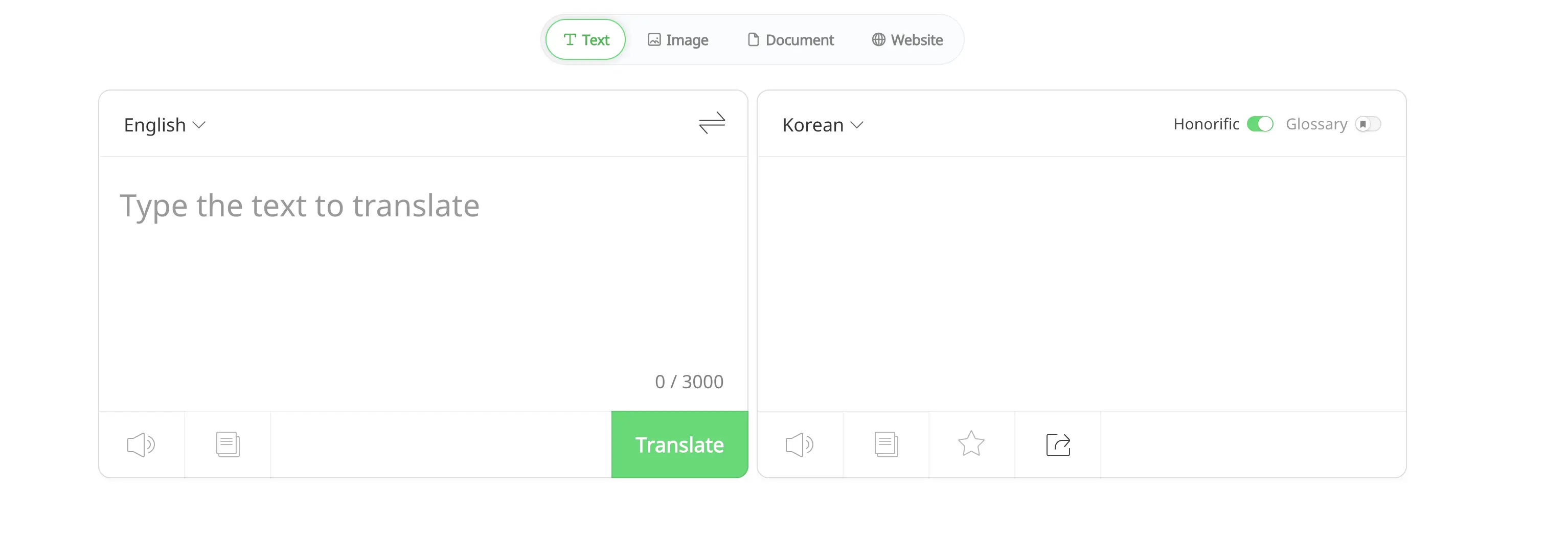
2. Maestra
Best for: Real-time Korean translation with both voice and live captions.
Communicating across languages, including Korean, is effortless with Maestra's live voice translator. You speak naturally in Korean or any of the supported 125+ languages, and Maestra instantly translates your speech into the target language, complete with AI-spoken audio and on-screen captions. If you prefer text-only translation, you can display real-time translations without audio and use captions for meetings or presentations where sound isn't needed.
Pros
- Supports AI voice cloning for personalized translations
- Multilingual sessions with multiple language outputs
- Integrates with Zoom, OBS, vMix, and Microsoft Teams
Cons
- Requires internet connection
- Small lag may occur in real-time sessions
Pricing: You can try live voice translation free for 1 minute. Real-time plans start at $79.
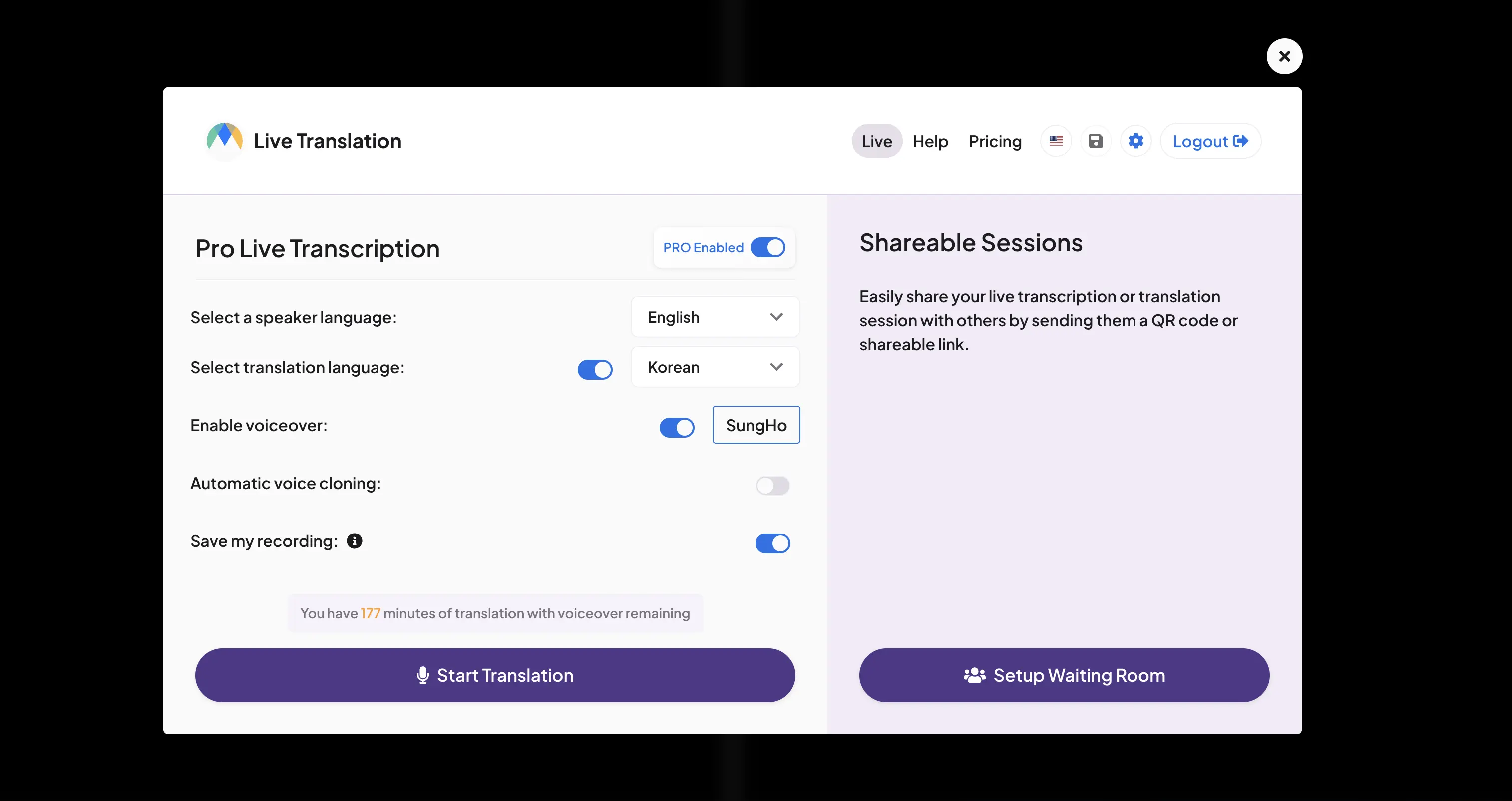
3. Google Translate
Best for: Quick, reliable translations across the widest range of languages.
Google Translate is the most widely used translation service globally, supporting 130+ languages including robust Korean translation capabilities. The app offers text, voice, camera, and handwriting input, plus a conversation mode and offline translation. While not as specialized for Korean as Papago, it's the most versatile option when you need to translate between Korean and less common languages.
Pros
- Offline translation available for Korean
- Integrates with other Google services
- Supports handwriting input for Korean characters (Hangul)
Cons
- Less accurate with Korean nuances and honorifics than specialized tools
- Can struggle with complex Korean sentence structures
Pricing: Completely free.
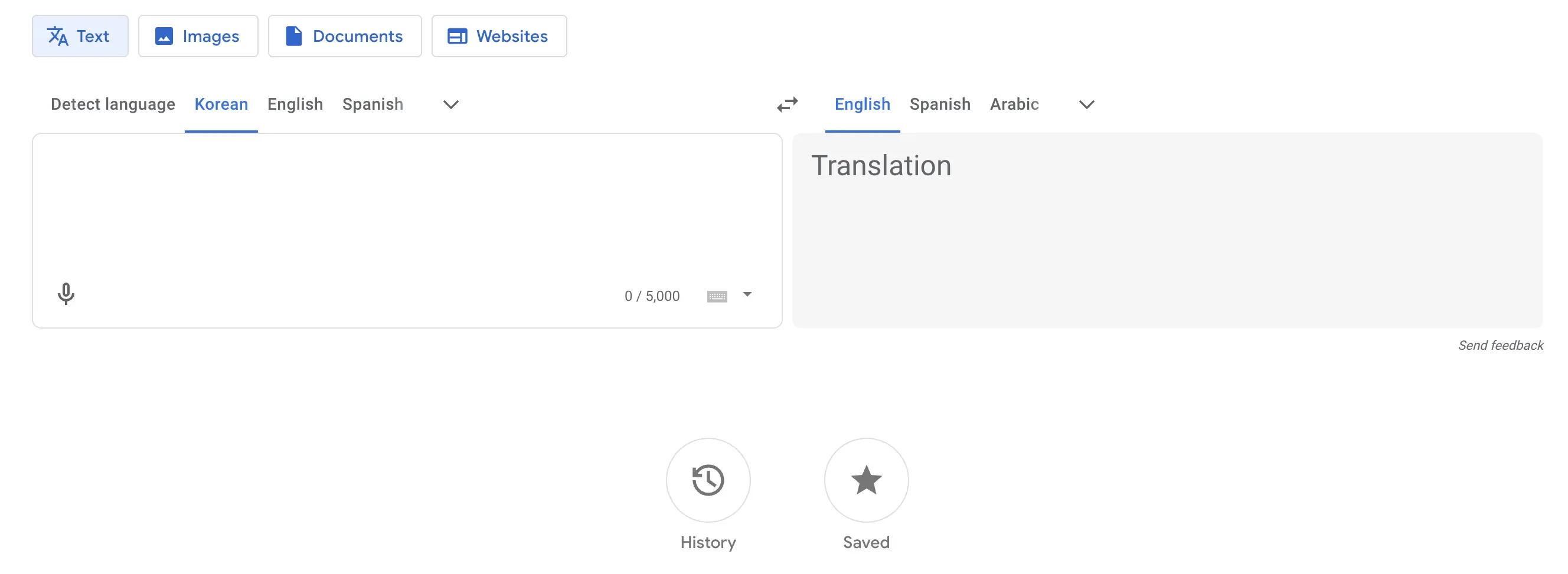
4. Microsoft Translator
Best for: Business users and Windows ecosystem integration.
Microsoft Translator is a reliable, enterprise-friendly translation app that supports over 100 languages, including Korean. It offers text, voice, and image translation, as well as a powerful multi-person conversation mode that allows real-time translations across devices, which is ideal for meetings or group chats. The app integrates seamlessly with Microsoft products such as Teams, Outlook, and Office, making it a strong choice for professional use.
Pros
- Clean, ad-free interface suitable for business environments
- Supports multi-device group conversations with real-time translation
- Strong privacy and security for business use
Cons
- Less natural phrasing than Korean-focused apps like Papago
- Interface can feel less intuitive than consumer-focused apps
Pricing: Free for personal use; enterprise pricing available through Microsoft 365 subscriptions.
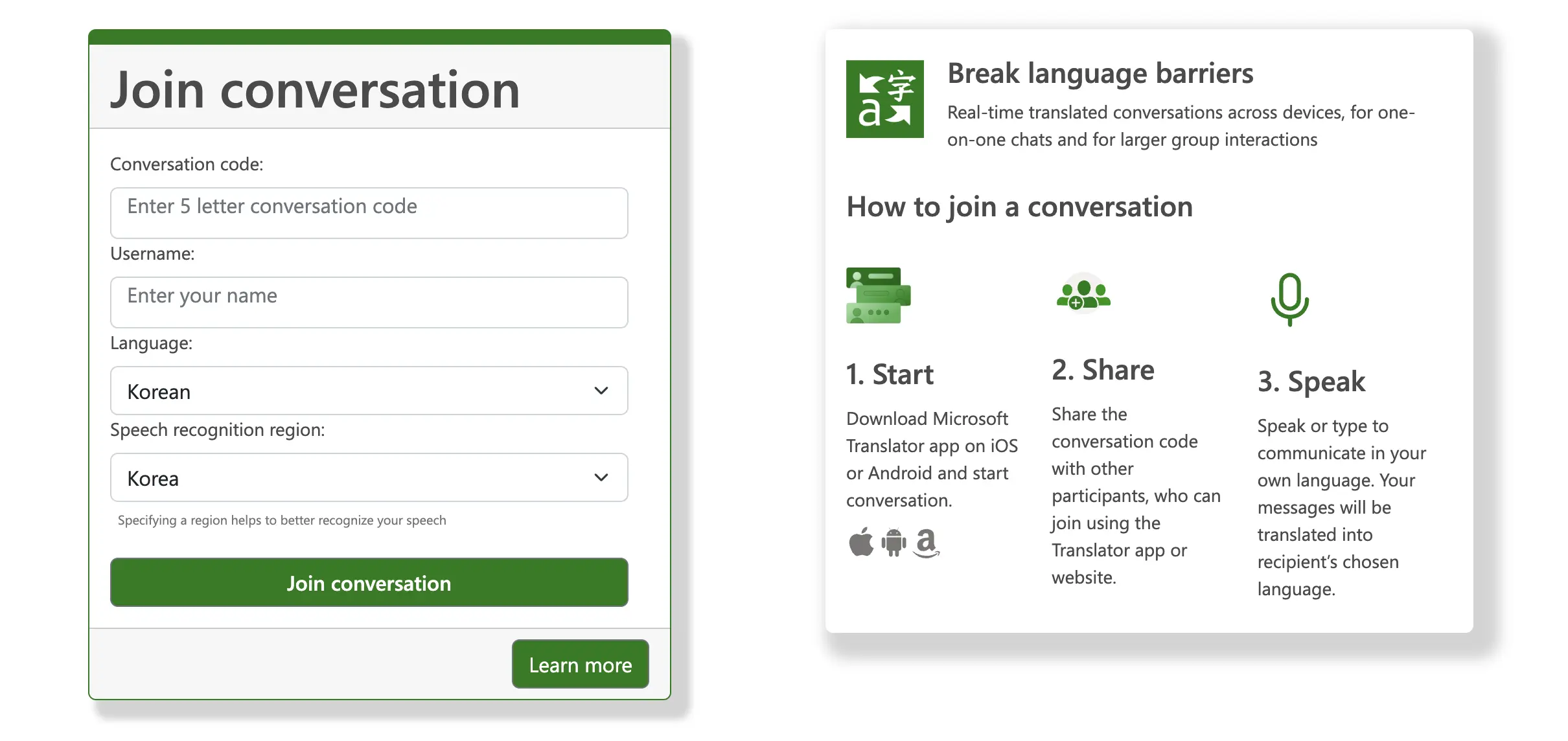
5. Flitto
Best for: Users who want a mix of AI and human translation for maximum accuracy.
Flitto takes a unique hybrid approach by combining AI translation with a community of human translators. Users can request human translation for important documents or unclear phrases, ensuring accuracy for critical communications. The app is particularly strong for understanding Korean slang, idioms, and cultural references that AI might miss.
Pros
- Handles text, voice, and image translations
- Community-driven insights and explanations
- Users can contribute translations and earn rewards
Cons
- Human translation requests may take time and require credits
- Fewer automation features compared to apps like Google Translate
Pricing: Free for AI translations; paid credits required for human translations.
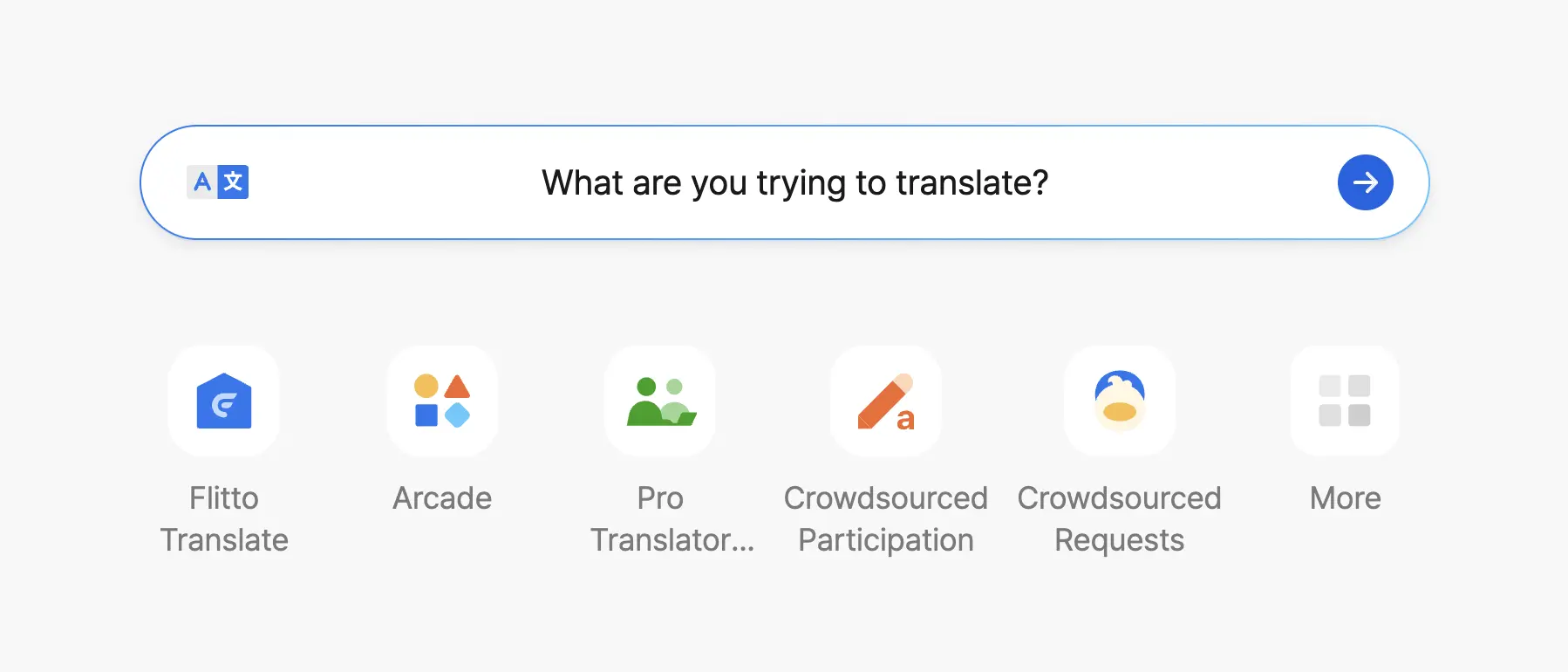
6. iTranslate
Best for: Users wanting a polished, feature-rich translation app with Korean support.
iTranslate is a popular all-purpose translation app known for its sleek interface and broad language coverage, supporting over 100 languages, including Korean. It offers text, voice, and camera translation with an intuitive design that makes switching between modes simple. While it’s not specialized for Korean, it delivers reliable everyday translations and includes helpful tools for learners and travelers alike.
Pros
- Phrasebook and verb conjugation features helpful for learners
- Works well across many language pairs including Korean
- Clean, easy-to-navigate interface
Cons
- Translations can be less nuanced for Korean compared to Papago
- Some advanced features (like offline mode or camera translation) require a Pro subscription
Pricing: Free basic version; iTranslate PRO starts at $7.99 per month.
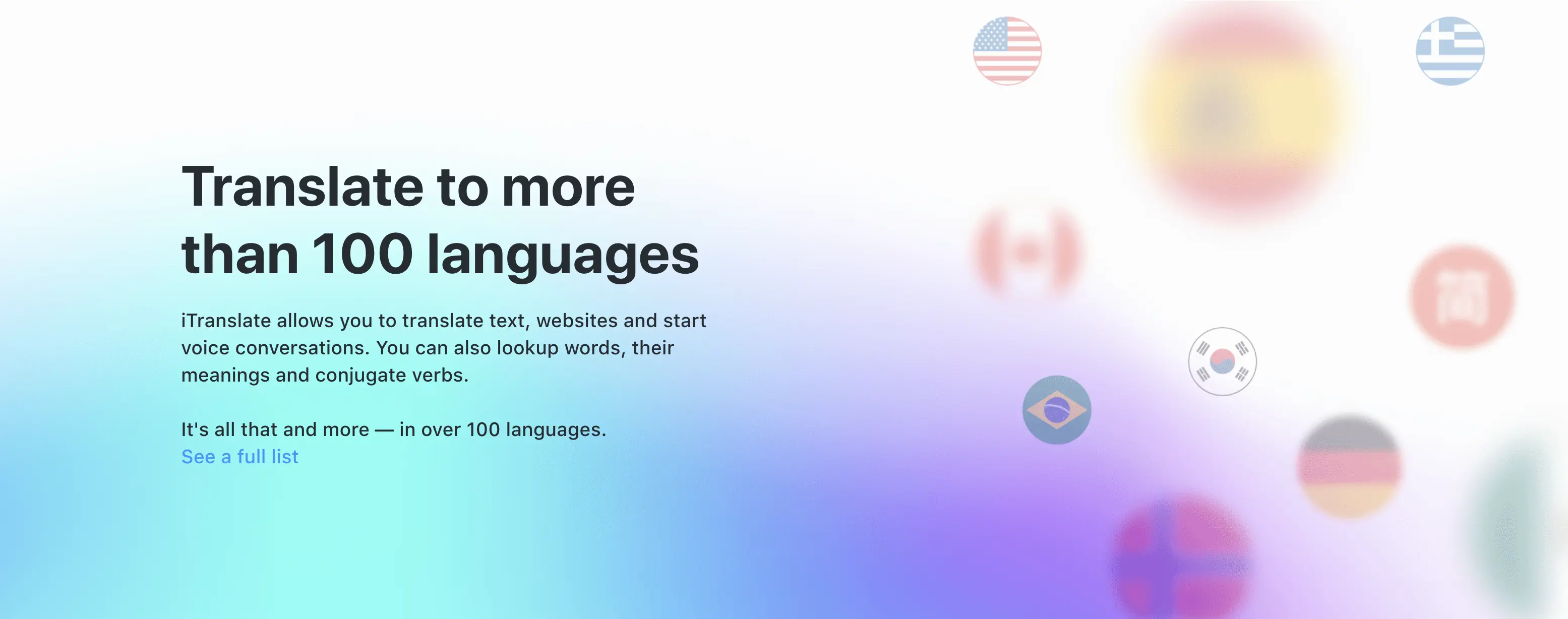
7. Waygo
Best for: Visual translation of Korean text in images, menus, and signs.
Waygo specializes in visual translation, allowing you to point your camera at Korean text and see instant translations overlaid on your screen. It's particularly excellent for reading restaurant menus, street signs, and product labels in Korea. Unlike many camera translation apps, Waygo works completely offline, making it invaluable for travelers without consistent data connectivity.
Pros
- Works completely offline (ideal for travel abroad)
- Fast, lightweight app with minimal setup
- Simple interface designed for quick use
Cons
- Limited to visual translation only (no voice or conversation modes)
- Free version limits number of daily translations
Pricing: Free with 10 translations per day; unlimited translations for $6.99 one-time purchase per language.
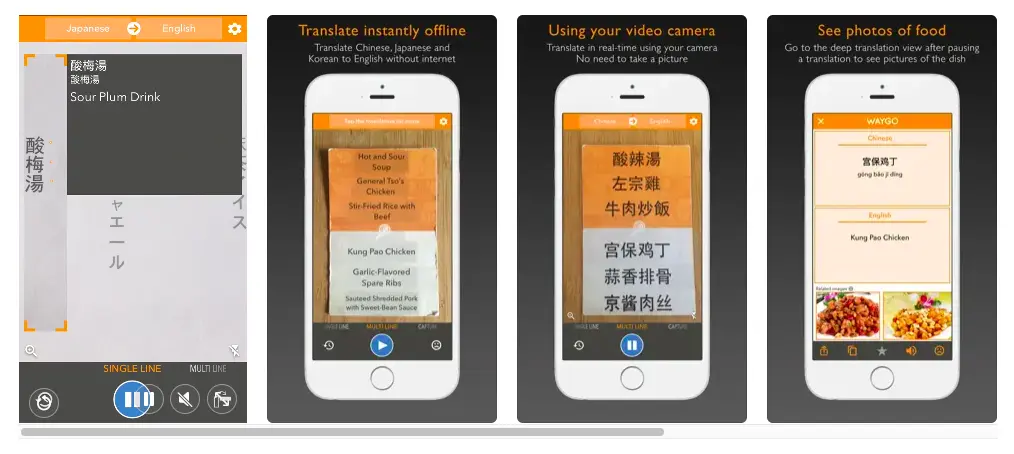
8. KoTranslate
Best for: Simple, dedicated Korean to English translation on iOS devices.
KoTranslate is a Korean to English translation app that offers voice translation, photo translation, and text translation with dictionary features. The app is designed specifically for the Korean-English language pair, making it a focused tool for travelers and students studying Korean. Its clean interface and real-time translation capabilities make everyday communication smooth and intuitive, even for beginners.
Pros
- Real-time two-way voice translation
- Supports text and photo translation with quick detection
- Includes transliteration for learning proper pronunciation
Cons
- Limited to only Korean-English (no other language pairs)
- Occasional lag in noisy environments during voice translation
Pricing: Free basic version; optional premium upgrades for advanced features.
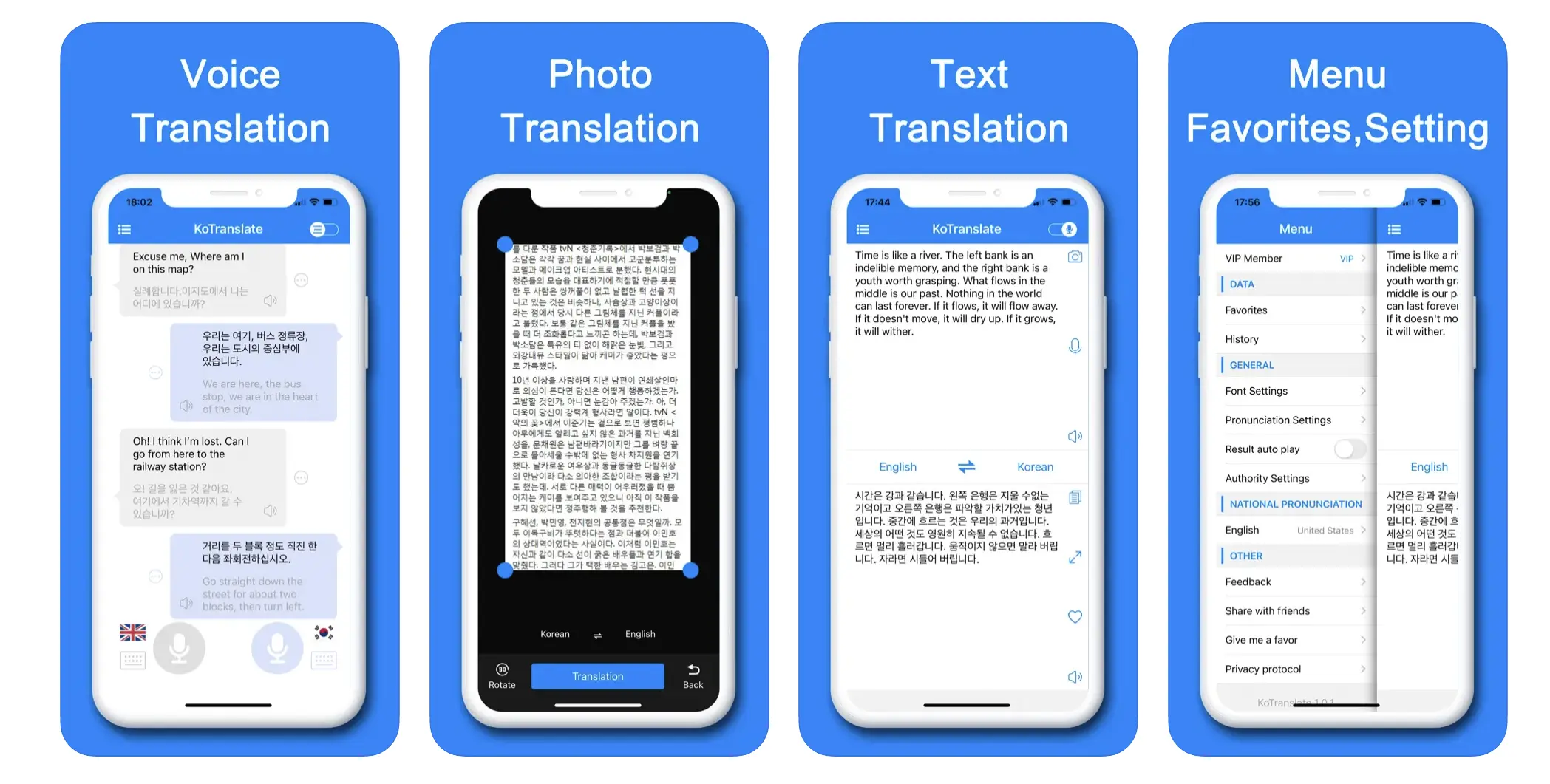
9. VoiceTra
Best for: Travelers needing reliable voice translation with speech recognition.
Developed by Japan's National Institute of Information and Communications Technology (NICT), VoiceTra is a research-based translation app with strong Korean language support among its 30+ languages. It shows you the original language text before translation, allowing you to verify what was heard before translating. The app can re-translate phrases into the original language for confirmation, reducing miscommunication.
Pros
- Excellent speech recognition accuracy for Korean and other Asian languages
- Research-backed technology for reliable performance
- Quick setup for immediate use (no account required)
Cons
- Primarily voice-focused with limited text translation features
- Requires internet connection (no offline mode)
Pricing: Completely free with no ads.
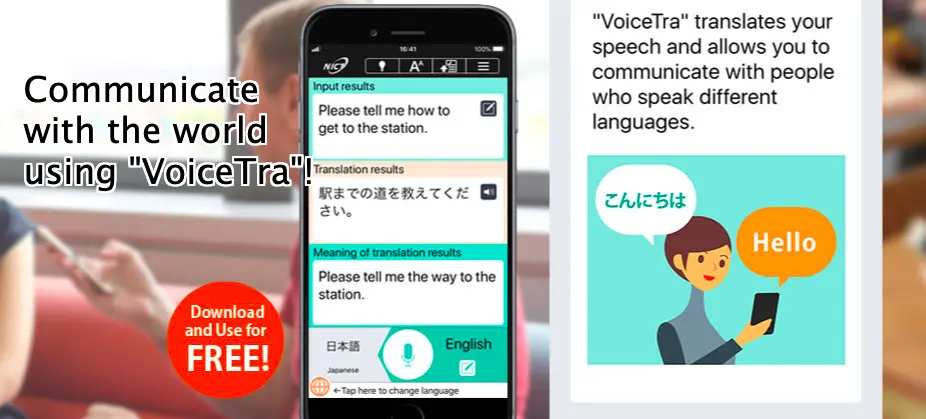
10. DeepL
Best for: High-quality written translations with natural, human-like phrasing.
DeepL is widely recognized for delivering some of the most accurate and natural-sounding translations available, thanks to its advanced AI and neural network technology. While it supports fewer languages than Google Translate, its Korean translation quality has improved significantly, producing results that feel more context-aware and fluent than literal. DeepL Voice for teams is also available in Korean, enabling high-quality speech translation for professional use.
Pros
- Exceptionally natural and contextually accurate written translations
- Supports full document uploads (Word, PDF, etc.)
- Great for professional, academic, or creative writing
Cons
- Korean support is newer and not as refined as its European language pairs
- Free version has character limits and limited document translations
Pricing: Free plan available; Individual plan starts at $8.74 per month and is free for 30 days.
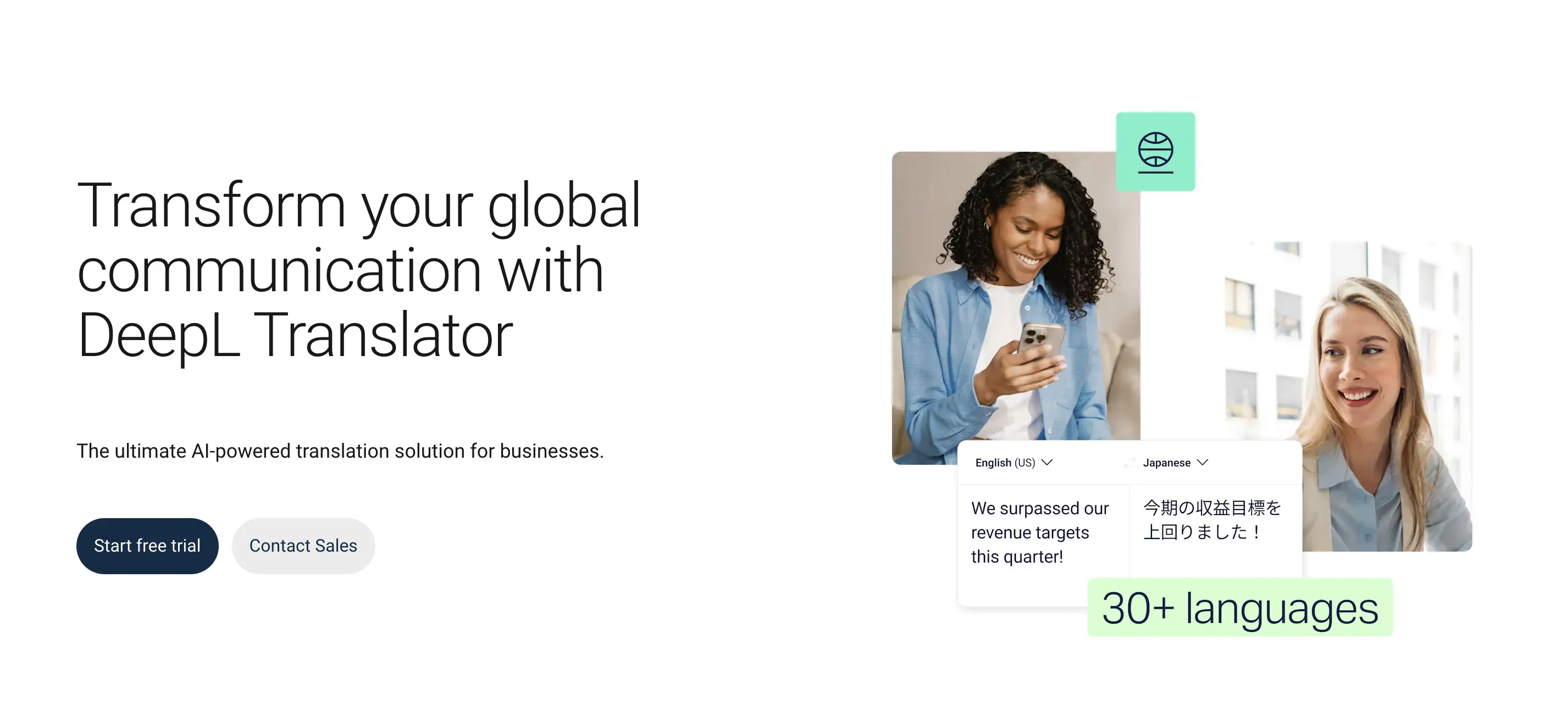
How to Translate Korean: Tips & Best Practices
Translating Korean accurately requires more than just using the right app; it requires the right technique. Whether you’re speaking, typing, or capturing text with your camera, applying a few smart habits can dramatically improve translation quality and naturalness.
Below are the best practices for voice, text, and image translations to help you get clearer, more reliable results every time.
Best Practices for Real-Time Voice Translations
- Speak slowly and clearly for better recognition. AI translators can misinterpret fast or overlapping speech. Slower pacing improves automatic speech recognition accuracy.
- Minimize background noise and echoes. Using headphones or quiet environments significantly reduces misrecognition.
- Use complete phrases instead of single words. Voice translation engines perform better with full contextual phrases. Fragments or interjections often cause mistranslations.
- Download offline voice packs if available. This ensures functionality even without internet access.

Best Practices for Text Translations
- Keep sentences concise and context-rich. Whether you’re translating into or from Korean, shorter and clearer sentences help translation engines interpret meaning accurately.
- Maintain consistency in terminology and phrasing. Use a glossary or translation memory for frequently used terms, whether you’re translating marketing copy, documentation, or dialogue.
- Avoid idioms, slang, and culture-specific expressions. Direct equivalents often don’t exist between Korean and other languages, so literal translation can distort meaning.
- Review the translation for tone and cultural accuracy. A quick post-translation check (by a native speaker or using back-translation) helps confirm that tone, context, and meaning are preserved.

Best Practices for Image Translations
- Ensure good lighting and camera focus. OCR (Optical Character Recognition) engines rely on sharp image quality for text detection. Poor lighting or shadows reduce accuracy significantly.
- Capture printed text whenever possible. Handwriting and stylized fonts are difficult for OCR to interpret correctly. Stick to printed materials like menus, signage, or packaging.
- Align the text horizontally in the frame. Tilting or angled shots often produce incomplete or jumbled translations.
- Double-check translations for context errors. OCR may misread one or two Hangul characters, completely changing meaning. Always verify key words, especially in menus or legal documents.
Once you’ve chosen your app, these translation tips will help you get the most accurate results every time.
Conclusion
Finding the best Korean translator app really depends on what you plan to use it for. Some apps shine in real-time communication, while others are perfect for learning, travel, or professional use. The good news is, whether you want to translate live conversations, documents, or street signs, there’s a reliable tool for every situation:
🌏 Travel and daily use: Papago, Google Translate, iTranslate, and Waygo for quick, accurate Korean translations on the go.
🎙️ Real-time translation: Maestra and Microsoft Translator for live Korean voice and caption translation in meetings or events.
✍️ Professional use: DeepL for precise written Korean; Flitto for AI + human translations in business or creative work.
📚 Learning: KoTranslate, Papago, and iTranslate for vocabulary, pronunciation, and grammar support.
💬 Voice translation: VoiceTra and Maestra for smooth, instant Korean speech translation.
Korean may be a complex language, but with the right translator, it becomes connection, not confusion. Whether you’re closing a deal in Seoul or learning your first Hangul characters, these apps can make translating Korean faster, smoother, and surprisingly natural.
Frequently Asked Questions
Is there a free Korean translator app?
Yes, several excellent Korean translator apps are completely free to use. Naver Papago is one of the best, offering accurate text, voice, and image translation without subscription costs. Google Translate is also a great free option, supporting Korean and 130+ other languages.
What is the best live translator for Korean?
For live Korean translation, Naver Papago is widely regarded as the most accurate and culturally aware option. It handles Korean words, grammar, honorifics, and speech levels better than most general-purpose tools. For real-time conversations or meetings, Maestra and Microsoft Translator are also reliable options.
What is the most accurate Korean translation app?
The most accurate Korean translation app is Naver Papago, developed by South Korea’s leading tech company, Naver. It excels in understanding nuances like politeness levels and sentence structure. For professional or written translations, DeepL is another excellent alternative.
What is the best online Korean to English translator?
If you’re looking for the best English to Korean translator, you can try Papago, DeepL, or Maestra. Papago is great for quick, accurate translations, and DeepL works best for polished writing. For real-time conversations Maestra offers instant Korean translation with voice and subtitles.
Which app can translate multiple languages to Korean?
Maestra is one of the best tools for translating multiple languages to Korean using AI-powered automatic translation. In addition to its real-time translator, it also offers a powerful AI video translator, allowing users to translate video files, recorded meetings, and podcasts in minutes. With support for over 125 languages, Maestra makes it easy to generate voiceovers and subtitles in Korean.
What is the best Korean translator app for iPhone?
For iPhone users, iTranslate is one of the best Korean translator apps thanks to its sleek design and accurate performance. It includes text, voice, and camera translation, plus offline mode for travelers without internet access.
What is the best Korean translator app for Android?
Google Translate remains the most versatile Korean translation app for Android, supporting over 130 languages and offering text, voice, and camera translation. It’s easy to use and works even without internet access.
Are Korean translator apps safe and secure to use?
Most reputable Korean translator apps like Papago, Google Translate, and Microsoft Translator are safe for everyday use and employ standard encryption practices. However, avoid translating highly sensitive information (medical records, legal documents, financial data) through free consumer apps, as your text may be stored or used to improve translation algorithms. For confidential business communications, use enterprise versions of Microsoft Translator or Maestra, which provide enhanced security and data protection.
